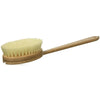Why You Should Cleanse Biofilms for Systemic Benefits

Run your tongue over your teeth. If it’s been a while since your last brushing, you might detect a slick film coating your pearly whites. Your dentist calls the film plaque, but the greater scientific community would call it a biofilm.
You can have similar films in the digestive tract, ears, and inside vital organs. And it turns out that biofilms can be prime breeding grounds for microbial infections, chronic fatigue, autoimmune diseases, inflammatory diseases, and more.
What are biofilms?
According to the Center for Biofilm Engineering at Montana State University, biofilms take shape when bacteria in moist environments adhere to surfaces by secreting a glue-like substance. This occurs on non-living materials such as metal and plastic (e.g. the slimy film coating a sink drain or shower curtain), but they also form on living tissues.
Think of biofilms inside the body as microbial bomb shelters. A construction of sugars and proteins, biofilms are designed to protect organisms from the onslaught of your immune system and any antimicrobial compounds you take to get rid of the living inhabitants.
If left to accumulate, the matrix that anchors biofilms to your organ systems gets stronger over time and begins to attract other microbes and toxins into the protective lair.
What starts as a small gang of pathogenic bacteria can become the breeding ground for invasive fungi, parasites, and viruses. A diverse biofilm also makes a great hiding place for environmental toxins and heavy metals. (1)
Organisms growing and reproducing within the biofilm matrix can become more resistant to antibiotics and the immune system. Normally, a healthy immune system seeks out to destroy single pathogens with an arsenal of immune secretions. But a protected biological mass under a biofilm may not signal the immune system of a possible threat. And any attack waged by immune cells has to make it through the tough biofilm shield to target the pathogens.
So you can see the potential problems if we just let biofilms be.
Biofilms incubate disease
Dental biofilms are associated with gum disease - no shocker there. Further into the body, biofilms have been identified as the root cause of ear infections and urinary tract infections. (2)
Inside the digestive tract, unhealthy biofilms are linked to the following GI diseases: GERD, parasitic infections, Candida yeast overgrowth, IBS, ulcerative colitis, and Crohn's disease. (3)
How do you get rid of biofilms?
Since biofilms are constructed from sugars and proteins, your best bet is to hit them hard with compounds that break apart those building materials. Enzymes that specialize in breaking down sugars and proteins can make a significant impact.
You may already have digestive enzyme supplements that you can use for biofilm clean up. When you take digestive enzymes with meals, enzymes speed up the dismantling of food in your stomach. When you take enzymes between meals on an empty stomach, they can spend time on systemic healing tasks such as inhibiting inflammation and destroying the protein-based protective shields around bacteria, viruses, yeast, fungi, and food allergens.
Some enzymes don’t take kindly to acidic environments. Taking enzymes between meals when the stomach is more alkaline limits their chance of being destroyed or inactivated as they pass through the stomach and move on to the intestines for absorption.
Even if cleansing biofilms isn’t a priority for you, there are benefits galore to taking protein digesting proteolytic enzymes (proteases, beta-glucanase, bromelain, papain). You're bound to find a few useful:
- Reduces inflammation
- Cleanses the blood
- Dissolves fibrin (a protein linked to inflammation and blood clots)
- Supports the immune system
- Dissolves scar tissue
- Digests protein-coated pathogens
- And these are systemic benefits, not just for the digestive tract.
Herbs that have shown promise in breaking through the tough biofilm matrix include cloves and false black pepper (Embelia ribes).
To further your biofilm cleansing efforts, it’s also important to supply the gut with the right in kind of organisms - probiotics. These good bacteria help to create a healthy intestinal biofilm, one that provides appropriate lubrication (so things slide through easier) and anti-inflammatory qualities.
Remember, a healthy gut has system-wide benefits.
Resources
1) Costerton, J.W, Stewart, P.S, & Greenberg, E.P. (1999). Bacterial biofilms: a common cause of persistent infections. Science, 284(5418), 1318-1822. doi: 10.1126/science.284.5418.1318
2) Lewis, K. (2001). Riddle of biofilm resistance. Antimicrobial Agents and Chemotherapy, 45(4), 999-1007. doi:10.1128/AAC.45.999-1007.2001
3) Macfarlane, S. & Dillon, F.J. (2007). Microbial biofilms in the human gastrointestinal tract. Journal of Applied Microbiology , 102(5), 1187-1196. doi:10.1111/j.1365-2672.2007.03287.x
1 comment

December 15, 2025
Seed Oils – What’s the Big Deal Anyway?
The anti-seed oil crusade has gained momentum in recent years and I am delighted to see awareness of their toxicity spreading. I am particularly passionate about this topic and it sparks a lot of controversy in the wellness and natural ...
Read more
December 14, 2025
Essential Supplements for Keto and Paleo Diets: Bridging the Nutritional Gaps
While keto and paleo diets offer compelling health benefits, they're fundamentally restrictive in ways that create measurable nutritional deficiencies. Unlike omnivorous whole-food diets, these eating patterns eliminate or dramatically ...
Read more
December 14, 2025
TCE Contamination: Why Municipalities Must Strengthen Protections
The safety of municipal water supplies represents one of the most fundamental public health responsibilities facing local governments. In recent years, scientific research has drawn increasing attention to the presence of industrial so...
Read more




Thank you so much. God bless you
Leave a comment